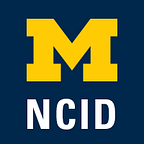Spark Writing Guidelines
Informing Public Discourse, Policy, and Practice
We believe that diversity scholars have the potential to positively impact and transform society. We approach public writing in a spirit of collaboration. By working together we aim to produce essays that are grounded in research and scholarship and written in a publicly accessible style to inform public discourse, policy, and practice.
Our team looks forward to working with you! You will have the support of our publications team and editorial board. We are here to help you before, during, and after the writing process!
Readers/Audience
As you craft an essay please keep in mind that the audience for Spark is not specific to any one discipline or education level. We recommend thinking of your audience as the general public who has minimal exposure to your topic. Try to avoid acronyms, overly technical language, and jargon; if you reference authors, theories, etc., briefly explain. Use shorter sentences than you might with academic writing.
While we aim to reach a broad audience to influence public knowledge and opinions, most essays have a primary audience to influence policy at the local, state, and federal level or institutional practices across a range of organizations. If you wish to direct your writing to a specific audience, for example, parents, teachers, advocates, etc., we encourage that as well, but this should be clear somewhere in the opening paragraphs.
Essay Word count
800–1,200
Title
90 Characters. Note that titles are how most people will find your essay. Titles should be succinct and appeal to your primary audience, avoid academic jargon. Before publication, our publications team will check for titles to be accessible and to optimize during digital search.
Writing Tips
First and foremost, it is important that public essays be accessible to audiences outside of the academy. This means that essays should:
- Avoid academic and disciplinary specific jargon and excessive use of acronyms;
- Avoid heavy theoretical discussion;
- Include real world examples, implications or next steps; and
- Keep the reader’s attention through writing quality and style, as described later.
Secondly, essays should be grounded in scholarly expertise. This means that the writing should be informed by scholarship to bolster the argument of the author. References to readings or resources should be hyperlinked, internal citations or a reference page is not needed.
We know that, no matter how good our writing is, the reader is unlikely to read every word closely. A few tips:
- Start the beginning with a hook and get to the point quickly. Unlike academic writing, which waits until the end for conclusions, if the reader does not know why she is reading, she is unlikely to continue reading.
- It is not uncommon for articles to be skimmed, so feel free to use bolding, italics, headings and subheadings, and even photos to call attention to various parts of the piece.
- It can be helpful to have an overarching narrative to the piece. Often this is the author’s personal touch, drawing from your experiences and woven in with the research presented.
- Academic writing is often narrow, as researchers aim to “speak to their expertise.” We encourage you to speak to your research, but also to comment on the context in which it occurs. For example, what other social and political happenings are shaped by the issue, or, in turn, shape the issue itself? What are the implications of your work? For whom? Why does this story matter, and why now?
- Paragraphs should be short and the use of sub-headings is encouraged. Writers should avoid disciplinary and academic jargon and use concrete nouns, active verbs, and clear sentence structure, and examples and illustrations.
Citations
Provide weblinks to support your points. All citations, even to academic articles, must be hyperlinked in the document. We do not use internal citations. Instead, we ask that you hyperlink the source to the reference contained in the text. For example, You may say “Research shows that…” and add a hyperlink to “Research.” We do not need a reference page. If you have not used hyperlinks before, here is a good explanatory video.
Images/Charts/Figures
You can submit charts, figures, or photos as you see fit. A higher resolution is always better. If you are using stock photos, please review our Guidelines for Selecting Photos and Images.
Bios
Short bios will include author names, professional titles and affiliations, and 1–2 sentences describing the author’s expertise. If you are a member of the Diversity Scholars Network (or if you are eligible to apply please let us know!) include the link to your profile, or a link to your professional website if you have one. Social media handles are also welcomed.
Document Format
Please submit your essay as a Microsoft Word document (we will use track changes to send feedback) and name your document as follow: Author(s) Last Names_Series Title_Date.
Publication
The Spark Magazine is an exclusively digital publication uniquely positioned at the intersection of academic journals and popular magazines. After an essay has been selected for publication, the production of a series takes about six months. Throughout our process we draw from peer-reviewed academic practices to promote well-informed multidisciplinary essays while also learning from popular media to offer public writing and timely content. The writing and editing period will last around 3–5 months.
Agreement
- Your piece will be distributed under the CC-BY-ND Creative Commons license. For more information about this license, please see http://creativecommons.org/licenses/
- You are the author of your piece. The piece will always list you (and co-authors) as the author(s), and will include your bio.
- The Spark publications team reserves the right to decide whether or not to publish the final draft of your essay.
